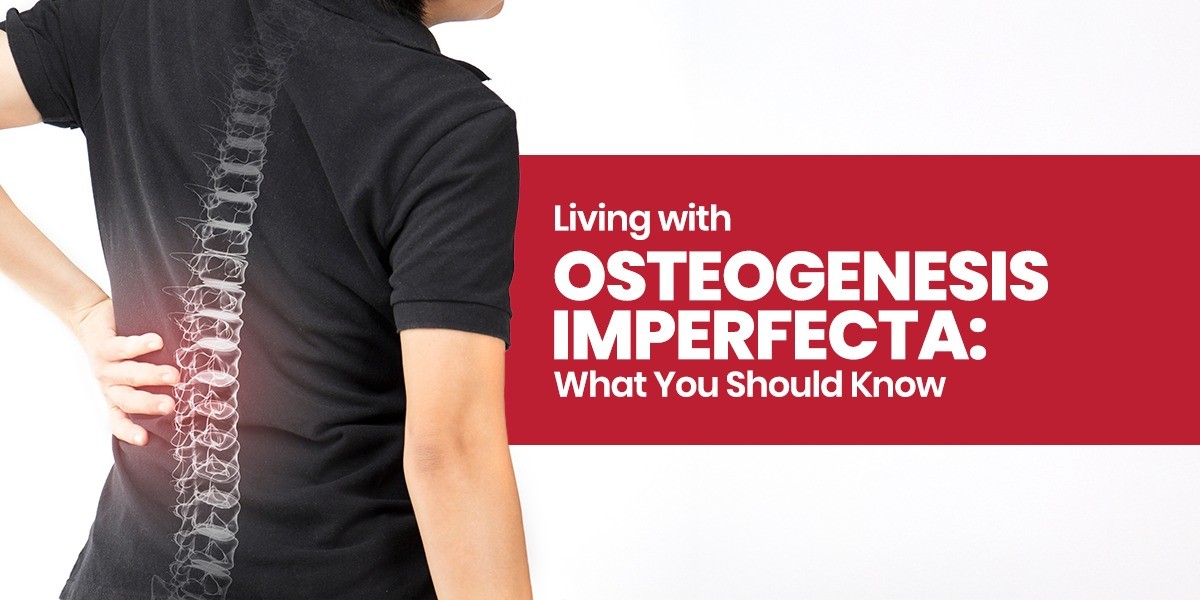What is Osteogenesis Imperfecta? Types, Symptoms, and Treatment

Osteogenesis Imperfecta (OI) is also known as brittle bone disease. It is a rare inherited condition that weakens the body’s capacity to form sturdy, healthy bones. People with Osteogenesis Imperfecta have bones that break easily, often with little or no apparent reason. This condition affects the skeletal framework, teeth, hearing, and overall growth. In this post, we’ll break down what OI is, its symptoms, and how it’s diagnosed and treated.
What is Osteogenesis Imperfecta?
Osteogenesis Imperfecta is caused by a genetic mutation that affects the production of a critical protein known as type I collagen. This is a protein responsible for bone strength and structure. Collagen acts as a building block in connective tissue. A deficiency or lack of collagen can lead to brittle bones or other physical abnormalities.
Osteogenesis Imperfecta is a congenital disorder, meaning it is present at birth. It can be inherited from parents or arise from a spontaneous genetic mutation.
Types of Osteogenesis Imperfecta
OI is classified into various types based on severity and specific symptoms. Generally, OI is classified into types I to IV, but modern genetics has identified up to types XVIII. However, the most discussed types are the first four.
Type I
- This is one of the most common and mildest Osteogenesis Imperfecta types.
- Here, individuals may experience a few fractures during childhood.
- Slight change in stature.
- Blue or grey tint to the whites of the eyes.
- Hearing loss may occur in adulthood.
- Mild bone deformities.
Type II
- This is the most severe form of Osteogenesis Imperfecta.
- This can cause death at birth or shortly after.
- Infants can have numerous fractures at birth, underdeveloped lungs, and extremely fragile bones.
- Babies affected with this usually don’t survive past infancy due to respiratory complications.
Type III
- Type III is a severe form, although not fatal.
- Individuals may experience dozens to hundreds of fractures throughout life.
- They can experience small stature and progressive bone deformities.
- There’s also limited mobility, and some individuals may even require the use of a wheelchair.
- Small stature, loose joints, and a barrel-shaped rib cage.
- Teeth might not be aligned properly.
Type IV
- This is a moderate form of Osteogenesis Imperfecta.
- Patients may have frequent fractures and short stature.
- Their bones break easily, sometimes even before they are born.
- Stature is smaller than average.
Symptoms of Osteogenesis Imperfecta
Symptoms of OI vary depending on its type. Here are some common Osteogenesis Imperfecta symptoms:
- Frequent bone fractures from minor trauma or no apparent reason.
- Bone deformities like bowed legs or a curved spine.
- Short stature is often noticeable in severe types.
- Blue, grey, or purple tint to the white of the eyes.
- Loose joints and muscle weakness.
- Hearing loss typically occurs in adulthood.
- Dental problems like brittle teeth.
- Rib or lung abnormalities causing severe respiratory issues.
- Some may experience fatigue, easy bruising, issues related to the heart valves, or connective tissues.
How is Osteogenesis Imperfecta Diagnosed
Osteogenesis Imperfecta can be diagnosed during birth or later in life, depending on the severity of the symptoms. Some popular methods are:
- Physical examination and medical history to assess bone fractures and other clinical signs.
- X-rays to identify bone fractures or deformities.
- Genetic testing to confirm mutations in the genes.
- A bone density test to check bone strength.
Treatment and Management
Since there’s no cure for the disease, Osteogenesis Imperfecta treatment helps to manage the symptoms and improve the quality of life. So let’s discuss a multidisciplinary approach that works for this disease.
- Medication: Medications like Biophosphonates are commonly used to increase bone density and strengthen it. This also helps to reduce the risk of bone fracture. Some are also given pain management medication after fractures or surgeries.
- Physical Therapy: Physical therapy is used to improve muscle strength, mobility, and posture. It also helps prevent bone fractures by enhancing coordination and balance.
- Surgical Treatment: Surgical treatment involves inserting metal rods into the bones. This helps to strengthen and stabilise bones. And sometimes, to fix bone deformities or scoliosis, corrective surgeries may be done.
- Assistive Device: Assistive devices such as braces, walkers, or wheelchairs can aid mobility and independence. There are also customised orthopaedic supports that can help in daily activities.
Conclusion
Osteogenesis Imperfecta is a complex and challenging condition. However, with early diagnosis and proper care, an individual can lead a fulfilling life with OI. Advances in medical treatment, physical therapy, and supportive care can help improve outcomes and quality of life for those affected.
If you think you’ve any symptoms or are already suffering from it, visit Regency Healthcare to find the best ortho doctor in Lucknow.
Also Read: Is Knee Replacement Right for You? Here’s a Quick Overview

 Call-an-Ambulance
Call-an-Ambulance



